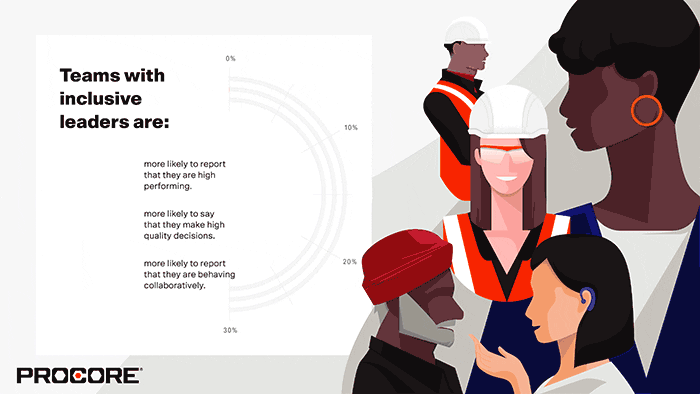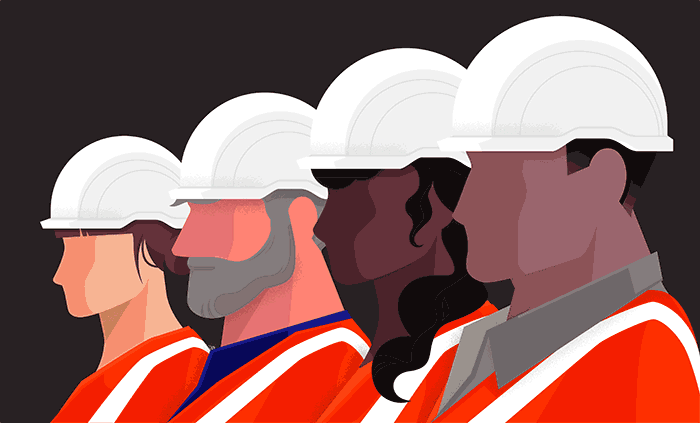Construction is a very competitive business, it’s easy to be swept up in efficiency, in results, in getting the job done with less because of the tight margins. It serves well to remember that a business is made up of its people, and so making sure each member of the team feels safe and welcome can truly benefit an organization.
Building toward a better future by ensuring teammates feel welcome is a reward on its own. But hearing all the voices in the room, however, can also impact the success of a business. Recent research suggests that teams with inclusive leaders consider themselves high performing and better decision-makers. They also work better together. Whether or not inclusivity programs have been built into a company’s framework, individual leaders can work to become more welcoming to different points of view.

How to Become More Inclusive
For some leaders, the concept of inclusivity might be completely foreign. Others may feel as though they’re already doing all they can to encourage open communication between team members and their leaders. However, leadership can sometimes be interpreted as authoritative. Practicing inclusivity requires leaders to consider input from other sources. A manager must learn to listen with openness —without thought or judgment — in order to truly take in different points of view.
It’s important that leaders adapt and flex their behavior to be able to meet others where they are. The more one learn about where others are coming from, the more empathetic and approachable they can be.
Start by Listening
Listening allows for honest and open communication between team members — a central tenet of an inclusive space. Trust builds when leaders take in feedback and concerns from team members and actively try to improve.
Getting started doesn’t have to be overwhelming, either. You just start.
By keeping an open mind to try out different communication styles and remaining flexible enough to implement suggestions and strategies from the team, leaders can become more open and inclusive immediately and on a daily basis.
Everyone has the opportunity to impact and touch someone else through their behaviors, directly or indirectly.


Leave a Reply